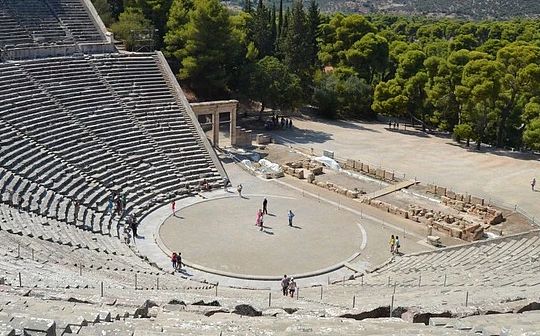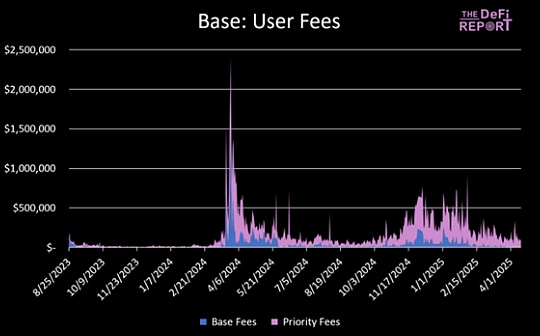
Ethereum pledge wave
After Ethereum entered the 2.0 era, pledged ETH running nodes became a new business.A qualified node operator can obtain an ETH currency of about 4%of the earnings of ETH. It is a very good financial management choice for long -term bullish ETH.
However, in fact, the threshold for running nodes is not low. It requires both 32 ETH’s funding thresholds, but also requires technology and hardware threshold that requires the steady operation of the node. If you accidentally fall, you will be fined.
So a number of Staking projects such as Lido, Rocketpool came into being, and specifically helped users solve the problem of funds and technology.
The number of ETH pledge has continued to rise. At present, more than 29M ETH pledge is pledged in the beacon chain. The total locking value has reached $ 71B, and the pledge ratio has risen from 2.4%in January 21 to 24.4%.
>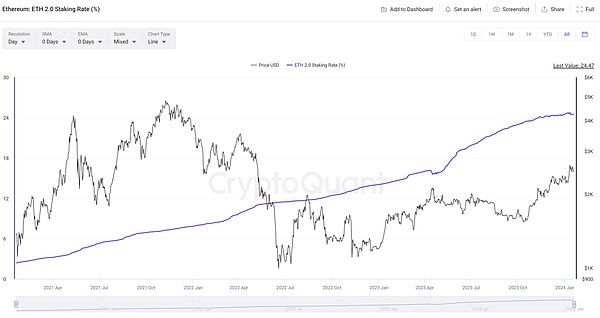
(Source: https://cryptoquant.com/asset/eth/chart/eth2/eth-20-Staking-raate- Percent)
Liquid Staking token (LST) and LSD (liquid Staking Derivatives) FI
When the user uses a pledge agreement, such as lido, it will get a liquidity pledged token (LST), such as STETH.
The LST itself is ERC20 token, so it can easily build a liquidity pool, so that the liquidity of this part of the lock -up is re -activated, and continue to invest in the LSDFI project, such as Frax, Origin, get more sets to get more setsBaby income.
>
(Source: https://facts.frax.finance/frxeth)
LSDFI is a DEFI project built on the basis of LST and LST derivatives. For example, PENDLE can obtain principal tokens and income tokens after being stored in STETH, thereby derived the revenue strategy based on different risk preferences.
From pledge to re -pledge
Node pledge is essentially allowing users to pay the margin operation node and maintain project safety.The nodes that earnestly perform their duties will get income, and they will be fined without margin.
Therefore, not just the public chain needs nodes, cross -chain bridges, prophecy machines, DAs, such as Chainlink, The Graph, Celestia and other types of projects, they need to pledge to ensure the stability and safety of their nodes.
The number, quality and huge capital investment in Ethereum make it the most reliable public chain.
However, any module that cannot be deployed or verified on EVM cannot use the trust advantage of the Ethereum network. It requires someone to run nodes and provide active verification services (AVS).
The operating node requires users to take out real gold and silver to ensure safety. It is bound to be difficult under the premise of limited liquidity.
The plan proposed by Eigenlayer is to pledge and let other AVS inherit and share the security of Ethereum.
>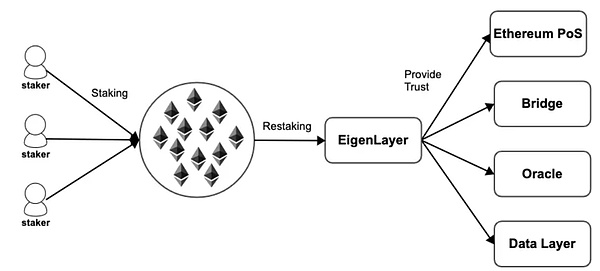
(Source: Eigenlayer)
In essence, Eigenlayer provides a security mechanism and a security market, that is, multiple projects can share the Ethereum security pool, and users need to measure the benefits and risks provided by each project to choose to join or exit in EigenlayerThe re -pledged module is built on the top.
The economic benefits of the pledge are obvious.
-
For users, you can eat more fish, pledge one Ethereum, and harvest pledge returns of multiple projects, including airdrop expectations of unburrelated projects (especially Eigenlayer);
-
For the project party, while reducing the pressure of obtaining pledge funds, it can inherit the security of the Ethereum.
Of course, this is not a completely risk -free win -win ending.
-
For the project party, the pledged tokens are Ethereum rather than their own tokens, so that their token value capture capacity is one less layer;
-
The user has an Eigenlayer’s trust layer in pledge, adding a layer of risk.
-
For Ethereum, it is not very satisfactory, which is equivalent to a employee who has worked multiple employees.And due to the additional pledge income, without restrictions, users are definitely more willing to pledge Ethereum into Eigenlayer instead of pledged directly into Ethereum.Then if the employee is punished by the company for any reason (probably violated discipline, or it may be a penalty for the company), it will affect its pledge in Ethereum, and even cause the node to fail to invalidate the node., Shake the security of Ethereum network.Therefore, God V previously posted that don’t let Ethereum’s consensus overload, just click EIGENLAYER.
Liquid restAKing Token (LRT) and LRTFI
For users, pledged to Eigenlayer is a good choice, but facing several problems:
-
Can’t enter Eigenlayer.Because the popularity of Eigenlayer is too high, the current types and quotas that are allowed to pledge are very limited, so it is difficult for users to squeeze in;
-
After the ETH or LST is stored, the liquidity is locked again;
-
The choice of node operators and the risk management of projects they participated in the complexity index of strategy research have increased.
Therefore, the emergence of the LRTFI project mainly solves these problems and reduces the threshold for re -pledge.
-
LRTFI will be pledged into EIGENLAYER’s ETH/LST to return liquidity to users in the form of LRT;
-
As for Eigenlayer’s points, either the project party dug it by himself or dig through the form of eigenpod (eigenlayer allows to pledge on the beacon chain directly, without limit limit);
-
Better risk management strategies, such as Puffer’s anti -SLASHING mechanism (the node was punished).
The income of LRT is built on the LST, and it will obviously have higher returns.At the same time, the LRT project will also have higher risks, the main risks are as follows.
-
The contract risk of multiple protocols and dolls, so be careful to choose the audited LRT project;
-
LRT projects also involve more assets, so it also includes the risk of pledged LST;
-
Participating in more AVS for high returns will lead to an increase in the amount of deposit penalties without risk exposure;
-
The other is the liquidity risk of LRT itself. Like LST, anchoring and other phenomena will occur. These are the risks of participating in the LRT project.
LRT project
At present, Etherfi, Renzo, SWELL and Kelpdao, there are nearly ten test networks in the LRT project, and there are nearly ten test networks. The difference in gameplay is not much different.Introduce the four projects that have been launched.
Ether.fi
Etherfi completed a $ 5.3 million seed round financing in February last year, and currently has more than $ 330 million.
Users can get $ EETH in ETH. Participate can get Eigenlayer points and Etherfi’s own Loyalty Points at the same time. They are all reference standards for subsequent airdrops.Exit liquidity is also very convenient. At present, the UNSTAKE function has been launched, and the exit friction is smaller.
>
(Source: https://defillama.com/protocol/ether.fi)
Furthermore, you can store $ EETH in PENDLE for PT and YT splitting. At present, the YT premium is very high, and 10%of the income is sold immediately.gold.
Please see the specific operation:
One fish and three eaten: Use Pendle to get ten times the Eigenlayer points tutorial
https://mirror.xyz/0x30bf18409211FB048B8ABF44C27052C9329F2/x6_c9xgm2-T0FBJCSDPVF-JOKQVWRJG
>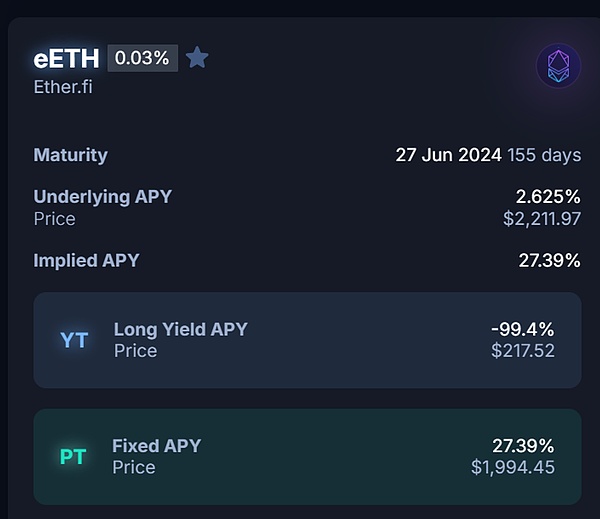
(Source: https://app.pendle.finance/trade/markets)
Renzo
Renzo had previously disclosed less information. After the 3.2 million seed round financing led by Maven 11 last week, TVL responded to a response and currently reached $ 100 million.
In addition to ETH, Renzo also supports LSTS, such as Reth, CBETH, STETH.Renzo’s LRT tokens are $ EZETH. The point plan Renzo Ezpoints is launched. The way to obtain points is to cast $ EZETH. It has not exited liquidity for the time being.
>
(Source: https://defillama.com/protocol/renzo)
Kelpdao
Kelpdao was launched by the old project Stader. Similar, after pledge, LRT $ RSETH can be obtained, and Kelpdao points can be obtained.
After Eigenlayer opened the deposit on January 29, the current deposit will be transferred to Eigenlayer to get double points.
Compared with other projects, there are fewer airdrop expectations, and Stader’s token $ SD has been already.And Kelpdao’s pledge is opened for pledged pledged through Eigenlayer’s LST, so the capable of accommodating funds has a upper limit, but it cannot be exited for the time being.
>
(Source: https://defillama.com/protocol/kelp-dao.
Swell
Swell is the LST project. The LRT is added by the trend. Users can store ETH to earn pledge income. They can also take SWETH to participate in PENDLE and other projects.
Its Super Sweth products allow users to deposit in ETH or STETH to obtain up to 18%of their annualized income.In addition to pledge income, you can also obtain Pearls (pearl, similar to a type of point certificate), and may be exchanged for Swell’s tokens when TGE.
The protocol currently has more than $ 425M. It will be stored in SWETH until the EIGENLAYER open mining on January 29 to get the EIGENLAYER points. The RSWETH of LRT can be directly involved in dual digging. It is also very convenient to exit the liquidity. There is a trading pool that can directly swap directly SWAP SWAP.Change to ETH.
>
(Source: https://defillama.com/protocol/swell)
Puffer
Puffer is based on the liquidity pledge protocol on Eigenlayer. It is a very technical re-pledge project. In the early days, it received funding from the Ethereum Foundation to develop Secure-Signer technology to reduce the risk of penalties and improve independent operators as much as possible.Quantity, thereby realizing network decentralization.
The node of Puffer is both Ethereum verification nodes and native nodes on EIGENLAYER, so you can get the reward of Ethereum and the EIGENLAYER rewards at the same time.Puffer received $ 5.5 million seed round investment, including the founders of Eigenlayer.
Both Ethereum and EIGENLAYER have a punishment mechanism. The private key security and anti-punishment of the Puffer node obtained the joint protection of the Secure-Signer, RAV software and Tee hardware, which effectively reduced the risk of LSD and LSDFI assets.
The project summary form that has been launched is as follows:
>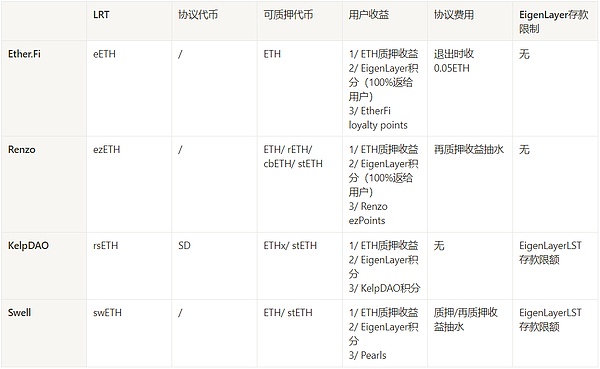
The LRT project based on Eigenlayer is relatively complicated, involving all aspects of details.
For example, the types of tokens that can be pledged (ETH, LSTS), the tokens (LRT) of the agreement itself, the distribution source of the distribution, the agreement charging mode, pledged to the EIGENLAYER way (whether it is pledged through LST or EIGENPOD pledge, which determines the agreement.The upper limit of the capital cap).
Similar to the LST project, on the premise of contract audit security, the more the LRT project is more likely to have the advantages of the first line, the more likely it is to create its own brand and network effect.
The funds on the market are limited, and it is important to seize the opportunity and leading status.But LRT has its complexity. How to do a good job of risk management is also a major competitiveness of the LRT project.
The LRT project will also be the same as the LST project. In order to ensure that the node is running stable, it will seek cooperation with DVT technology projects, such as Obol, SSV; LRT -based borrowing, DEX, and derivatives will gradually appear;Support will also be one of the development direction of the LRT project.



